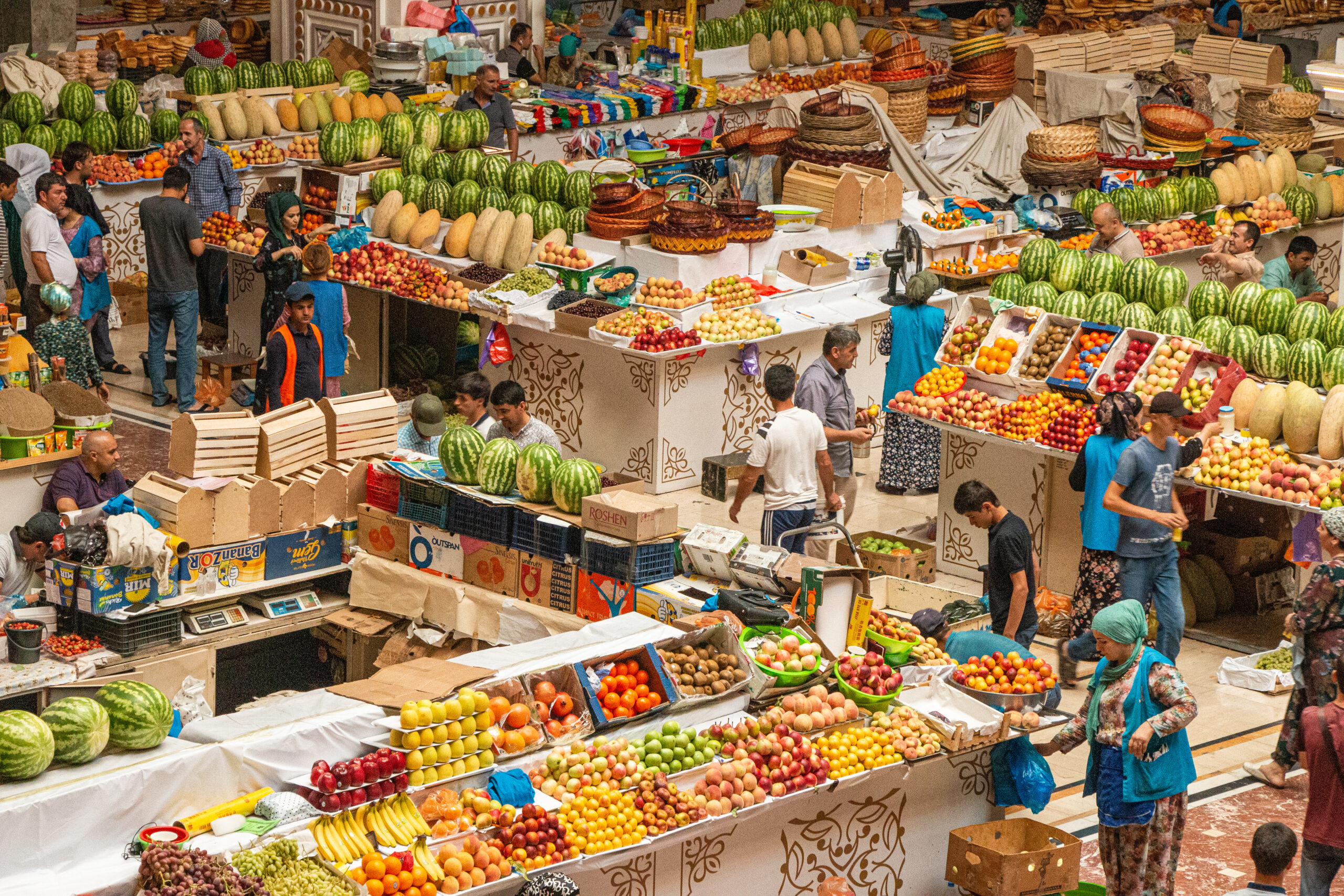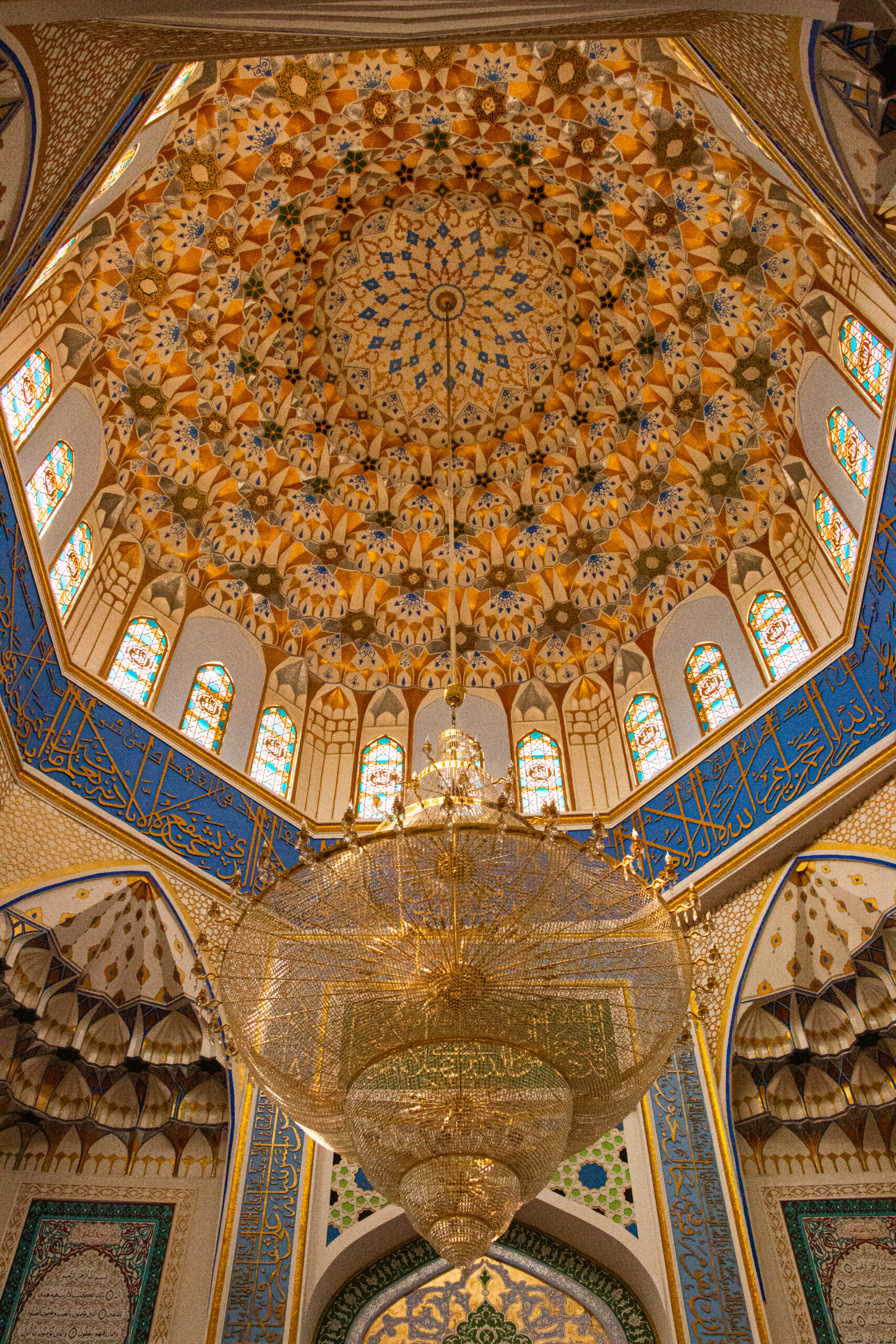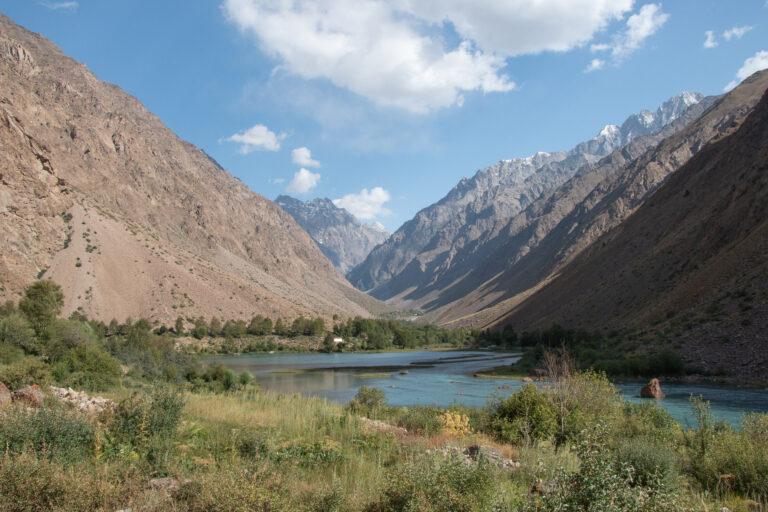Tajikistan – Gateway to The Pamir Mountains
Geography of Tajikistan
Tajikistan is the gateway to the Pamir Mountains. It is landlocked and is one of a group of countries in the high mountain region of Central Asia, also fondly known as The Stans. Roughly ninety percent of Tajikistan is made up of high mountains, glaciers and arid plateaux.
The Pamir Highway
Some of the principal ancient Silk Routes run through Tajikistan. Stories of The Pamir Highway conjure up tales of the 13th century explorer Marco Polo who was said to have travelled along this route on his way to Cathay (China). The main section runs through the countries of Tajikistan and Kyrgyzstan.
Badakhshan
The Pamir Highway is the World’s second highest international road. Much of the route through Tajikistan crosses the autonomous region of Badakhshan. The region was once an independent khanate (run by a khan and geopolitically similar to a principality). Aside from the Tajik visa I also had to apply for a regional pass for Badakhshan.
The Pamir Highway is still one of the most inaccessible and underdeveloped parts of the world. The roads are rough, life is simple, and there is electricity in parts.

The History of Tajikistan
Sogdiana
Most of Tajikistan and some bordering areas were once the domain of the Sogdians and a province of the ancient Persian Empire. The Sogdians were the merchants of the Silk Route during the Middle Ages. The oasis towns of Sogdiana were key to its success and created resting points to revive refresh and replenish stocks on the arduous trading journey between East and West.
The Arrival of Islam
By the 10th century Sogdiana had converted to Islam and during the following centuries it became absorbed into a number of invading empires including the Samanids and later on the Timurids (between the 14th and 16th century). Following the deline of these empires, areas of today’s Tajikistan were controlled by various Khanates including Bukhara (mostly Uzbekistan today), Kokand (mostly Uzbekistan and Kyrgyzstan now) and Badakhshan. For further information, visit: Unesco Publications “History of Civilisations of Central Asia Volume 5”.
Tajikistan and Imperial Russia
Following Russian occupation in the mid 19th century, Tajikistan eventually became a republic of the newly formed Union of Soviet Socialist Republics (USSR) in 1929. In 1991, it gained its independence from The USSR. Following independence, the country was under civil war for six years. Finally, in 1997 a general agreement brought peace to the country. Unlike its ex-Soviet neighbours, Tajikistan received far fewer benefits of Soviet infrastructure, and that is part of its charm and gives strength to its own history and culture.
(For more information on Tajik languages, history and culture see: https://www.britannica.com/place/Tajikistan/Cultural-life)
The Journey Begins
I finally got to make the journey on The Pamir Highway in the summer of 2019. I had begun preparing the year before and, given that I didn’t have months for the journey, the best option seemed to be to go with a private company who would organise the 4WD, driver, accommodation and food. With patience and time it is possible to do the journey using public transport. I contacted a number of companies in both Tajikistan and Kyrgyzstan; it was proving very difficult to find a trip already set up that I could join. Most companies need a minimum of two people to make the journey viable. Fortunately, one company had two other travellers signed up, so we were on our way.
Getting to Tajikistan
Tajikistan is not the easiest place to get to from Europe. The Lufthansa flight via Frankfurt to Almaty, Kazakhstan, proved to be a good option. After a few days exploring the city, I flew on to Dushanbe, Tajikistan. The route along the Pamir Highway took me from Dushanbe to Osh (in Kyrgyzstan). From there I made my way to the capital of Kyrgyzstan, Bishkek, and finally back to Almaty in Kazakhstan.
Dushanbe
Dushanbe has a strong middle eastern feel, and apart from some featureless and block-styled architecture, there is little that smacks of a previous Soviet influence. Tajik is very similar to the official language of Iran, Farsi. As I am familiar with Arabic, I was able to make use of many of the Islamic greetings that are the same in Farsi and Tajik. It was a good starting point for contact with the people.
I felt very much at home wandering around Dushanbe. It was very welcoming; strangers even stopped to chat with me. It is very hot in the summer months, but manageable thanks to the tree-lined streets and airy parks with their fountains. Many smart new restaurants and cafés have opened in the city centre giving Dushanbe an increasingly cosmopolitan feel.
The new smart and clean Mehrgon Market is an explosion of colour – full of fresh fruits, vegetables and spices. It’s a lively and uplifting meeting point.


As I was wandering around the area of the Haji Yakub Mosque, a young man kindly and proudly invited me in. The ornate and beautiful decoration on the inside added to the sense of serenity and peace.

Legacies of the Soviet era include important parks and some impressive public buildings. Rudaki Park, named after the Tajik Poet born in the Samanid Empire in the 9th century, is beautifully maintained and lies alongside the imperial-styled National Library of Tajikistan.








